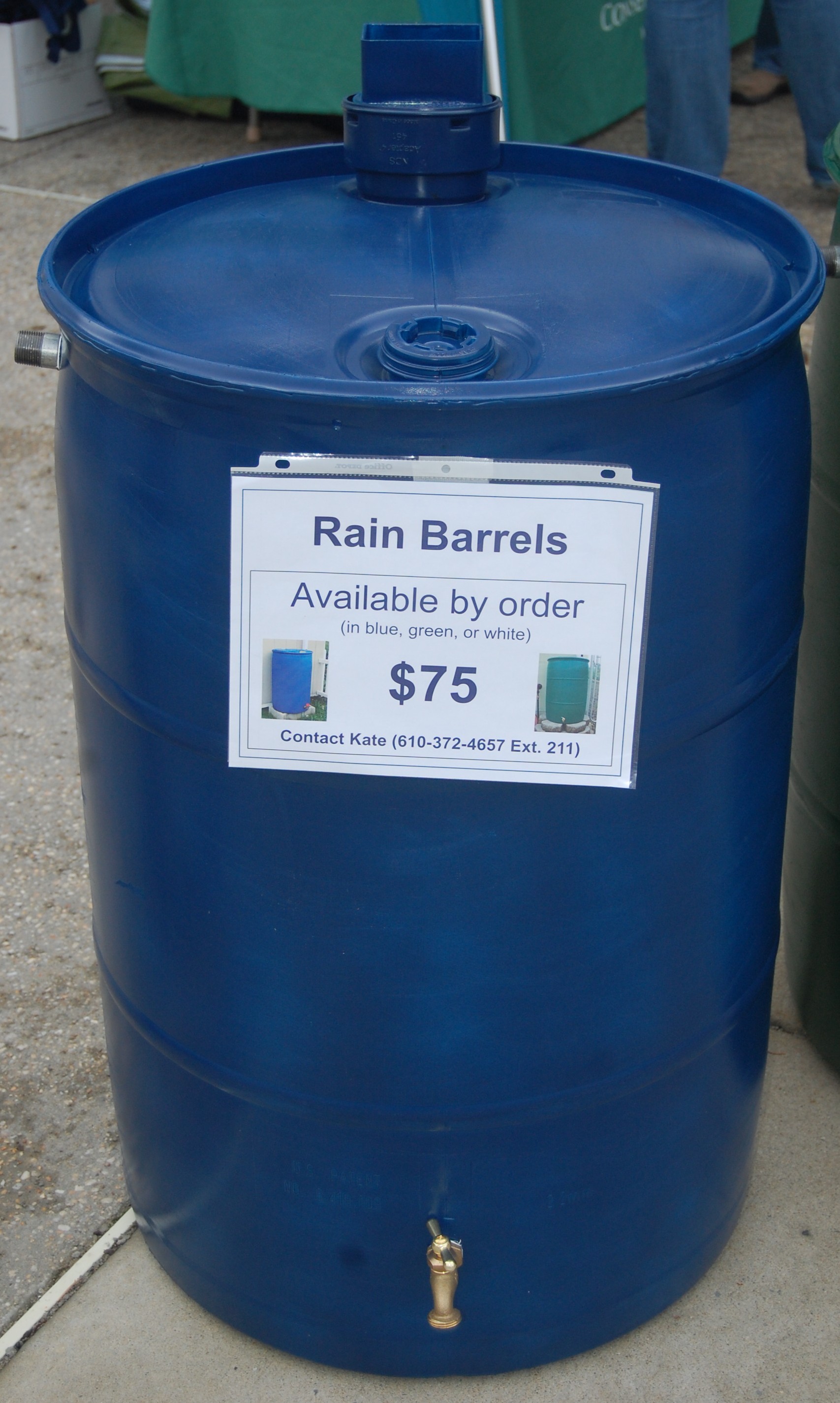The Berks County Conservation District is offering hand-made crafted rain barrels!
Each rain barrel is a 55 Gallon Plastic Drum with a spigot, overflow valve, and inlet. (Please note: that the barrel lid does not open. All sales are final. No refunds.)
The proceeds of each Rain Barrel sold supports our Student Scholarship Program!
Are you a school program looking for the Paint the Rain Contest? Click Here!

Helpful info about Rain Barrels
General Info Brochure on Rain Barrels and nonpoint source water pollution
Thinking of making your own rain barrel? Try these instructions!
How many rain barrels do you need? You will be surprised at how much water drains off or our roofs. This helpful calculator helps you determine how much water you will capture.
